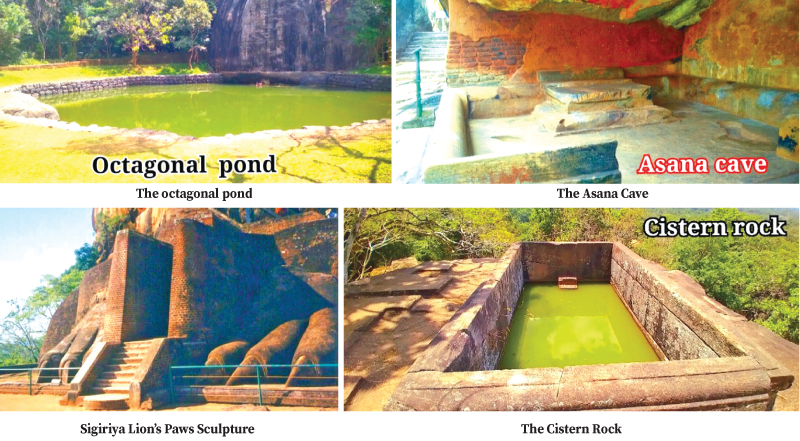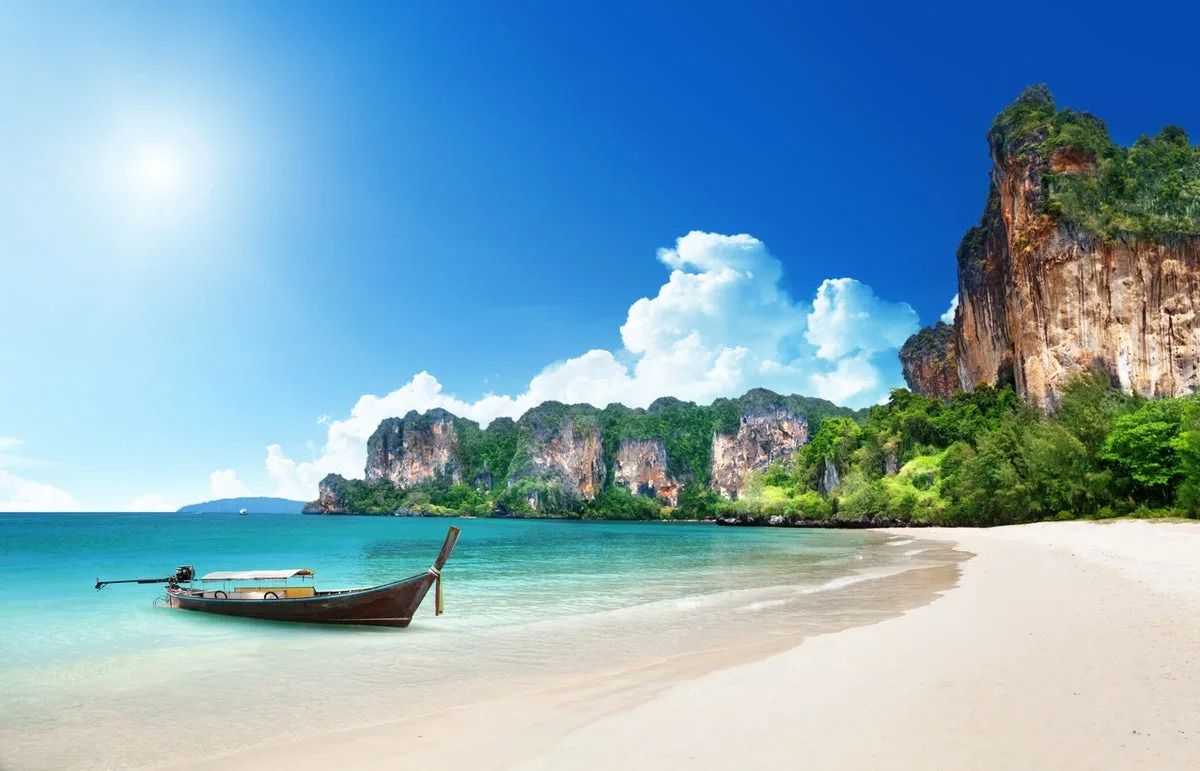Surrounded by lush green vegetation and resplendent in majestic grandeur, a giant boulder appears in the distance as if it were a lion couchant. This historical site in central Sri Lanka is brimful of the ruins of an ancient rock fortress that was built in the 5th century CE on a unique boulder of an enormous size. This rock fortress is famously known as Sigiriya euphemistically thought of as a shining blue sapphire in the tiny, beautiful, paradise island nation in the Indian ocean.
The Sigiriya Rock Fortress, which owns a striking geological profile enriched by a bewitching feat of technology and town planning, was designated as a World Heritage Site by UNESCO in 1982 owing to its inexpressible grandeur of universal significance manifest in ancient architecture, historical value, art, town planning, hydraulic technology and also cultural landscape features. The rock plateau, the cynosure of the Sigiriya royal palace complex, rises to a height of 1,145 feet (349 metres) above the sea level and is some 600 feet above the surrounding plain. The final ascent to the summit of the rock is through a monumental pair of lion paws, which have withheld the elements of nature and hence the name of the place called Sigiriya, a corruption of the word ‘Sinhagiri “, the lion rock.

Sigiri murals, by extension, charming Sigiri frescoes of lovely damsels, the Mirror Wall, the ruins of what is believed to have been a hilltop palace amaze visitors coming there from around the world. The moats encircling the historically and archaeologically significant site where man-made wonders of a by-gone era are ubiquitous must have been made to prevent enemies from intruding into the kingdom. Ramparts and moats This citadel built by King Kashyapa over 1600 years ago is surrounded by three massive ramparts and two moats and also had four entrances.
The outermost earthen rampart is 43 metres wide and over six kilometres in length. It encircles the entire citadel. The middle rampart is 37 metres wide and an eight metre wide roadway is seen along its top.
Around the citadel are two moats often filled with water and teeming with crocodiles. The outer moat, the well-preserved ruins of which are visible even today is 175 feet wide and 13 feet deep. The inner moat is about 23 metres wide and four metres deep.
The water garden is thus created so well that it makes the interior of the palace complex cool. The whole face of the hill appears to be a gigantic picture gallery. The murals of the beauties supposed to have been King Kashyapa’s concubines or harem women would have covered most of the Western face of the rock.
There are references in the graffiti in the Mirror Wall to 500 ladies in these paintings. The identity of the ladies in these paintings has not been confirmed yet from various speculations. The Sigiriya Rock Fortress is a unique creation that speaks volumes about the technological and architectural expertise of our ancestors in addition to being a world heritage open art gallery full of wonders.
This is an extraordinary tourist destination ideal for those who have wanderlust. Many tourists including locals climb the Sigiriya rock and watch the mountaintop marvels and mountainside murals and frescoes. But Sigiriya has much more to offer its visitors except the popular artefacts and tangible heritages known to many a tourist.
Whoever enters the inner city through the water garden can see the ruins of a monastery of the Kashyapa period. King Mugalan, who was enthroned after the suicidal end of the life of King Kashyapa, constructed a temple in Sigiriya and donated it to Thera Mahanama of the Diksanda Seneviya Pirivena. The only structure in Sigiriya that could be identified as a monastery is on the right hand side of the beginning of the boulder garden.
Several remnants of this Pabbata Vihara type monastery included a cave presently converted to an image house with a drip- ledged inscription of the pre-Christian era, a stupa on a rocky outcrop near the ramparts of the inner city and a Bodhigara of circular design, paved with stone blocks on an elevated terrace. The cave with drip-ledges was covered by a brick wall and had in it a headless image hewn in lime stone, which is presently lying in the Archaeological Museum as an exhibit. This cave which had been used as a dwelling for the bhikkhus during the first monastic phase had been converted into an image house during the second monastic phase after Kashyapa.
There is evidence of a second drip-ledge beyond the original drip-ledge and of paintings drawn on the plastered interior rock face. On the left hand side of the inner city and close to the inner city rampart is a cave on a plane. This cave has been named after an erudite scholar, P.
E. P. Deraniyagala who rediscovered its presence.
There had been many figures of damsels painted on the rock face as one of them can still be clearly seen for all its gradual disfiguring. Fragments of 22 paintings of female figures are said to have been rediscovered by Deraniyagala in 1948. These frescoes were of the same period as those more artistic and famous Sigiriya frescoes.
Unlike those frescoes in the main cave of the Sigiriya rock, they are full figure representations. On the right hand side of the water garden and going past the Bodhigara beyond the boulder garden, there is a unique cave with a rock face bearing a cobra head shape called Cobra Hood Cave. It is also a cave with drip-ledges used as a dwelling for the bhikkhus during the first monastic phase before Kashyapa.
The paintings in the cave are believed to belong to the late 5th CE or early 6th CE. Place for meditating bhikkhus The next through a boulder archway, is the Asana Cave with a drip-ledge, with its picturesque look of rock-cut half walls and the raised rock-cut seat in the cave. This had been made for the use of meditating bhikkhs when Sigiriya was a monastery before King Kashyapa.
On the roof of the cave are parts of paintings of young damsels said to belong to King Kashyapa’s reign. Close to the Asana cave within the boulder garden are two other monuments, the Cistern Rock and the Audience Hall Rock. The Cistern Rock is special inasmuch as it is an indentation chiseled out of a rocky outcrop from the top, vertically down to form a tank which is 13 feet ×10 feet and six feet deep.
The brim of the cistern comprises bonded rock pieces protruding out of the rocky outcrop. An overflowing drain has been engraved on the top of the rock and on its vertical face. Slightly below this rocky outcrop and adjoining it is another rocky outcrop, on the top of which a magnificent open audience hall comprising a well-levelled stone floor with a raised stone seat has been created.
It is 15 feet 10 inches wide, seven feet 10 inches long and one foot and nine inches high on its West edge. There is also a flight of steps giving access to the Audience Hall from its South-East corner. The rock surface has an area of 60 feet ×37 feet in length and breadth.
On the left hand side of the water garden, at the furthest end of it and close to the boulder garden is a small boulder at the foot of which is an octagonal pond. The boulder’s natural location makes one of the eight sides, seven of which are made of granite blocks..



















